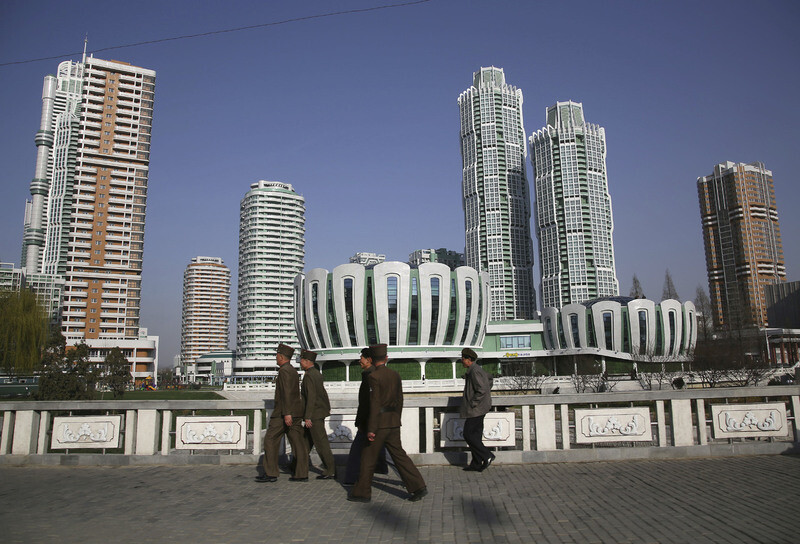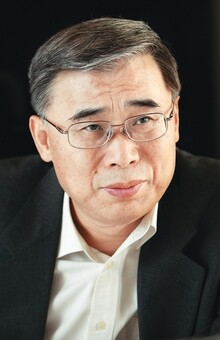hankyoreh
Links to other country sites 다른 나라 사이트 링크
[Column] Skewed statistics on North Korea’s economic status

When I was serving as Unification Minister in early 2006, I called in officials from the Bank of Korea (BOK) as the minister responsible for North Korea policy. According to the bank’s estimates, I noted, North Korea had a per capita gross national income (GNI) of around US$1,000 in 2004, while Vietnam had a GNI of about $500.
I asked why no one was starving to death in Vietnam when people were starving to death in North Korea. The answer I received was that the bank had been using South Korean figures to calculate North Korean indexes for the price of goods, value-added ratio and exchange rate since it had begun releasing statistics about the North Korean economy in the early 1990s because of the difficulty of acquiring the relevant basic data from the North.
The result of that practice was that North Korea’s per capita national income, which had been estimated to be around US$400, was greatly inflated. At the time, I asked the bank officials to reassess North Korea’s economic indexes by collecting consumer price information from the more than 10,000 defectors living in the South, but my request was rebuffed. Even today, the bank has yet to correct its indexes.

At the time, I asked the bank officials what the point was of statistics that were compiled based on such unrealistic indexes. Their response was that the statistics were useful for analyzing trends in North Korea’s economic growth rate and in various industries. But in the latest figures released by the bank, even those areas of analysis show a great disparity with the reality in North Korea. During a field survey on the border of North Korea and China in August and a trip to Pyongyang at the beginning of this month (my first trip there in 11 years), the problems with the bank’s statistics came into clearer focus.
According to cumulative calculations by the BOK, North Korea’s real gross domestic product (GDP) has grown a total of four percent, including five years of negative growth, during the decade from 2007 to last year. During the five years since North Korea initiated its reform and opening policy in 2013, its GDP has only grown 1.4 percent, the bank said.
Such figures are unbelievable. The North Korean economy is chock-full of evidence contradicting the BOK’s statistics – the large number of new buildings that have gone up in Pyongyang and border cities recently, the huge increase in automobiles of all kinds and the burgeoning IT market, evidenced by the nearly 6 million mobile phones in a country that had none ten years ago.

Looking at specific categories makes these statistics look even flimsier. Even though hundreds of types of locally produced foodstuffs have begun to push aside Chinese products and dominate store shelves over the past five years, the Bank of Korea estimates that North Korea’s light industry has only grown by 3.3% during that period. During a five-year period when Pyongyang’s skyline was transformed by high-rise buildings going up and when various large-scale construction and architectural projects took place in the countryside for the first time in the country’s history, the bank estimated that North Korea’s construction industry grew by a measly two percent.
During my field surveys to the North Korea-China border, I’ve witnessed a distinct improvement each year in the electricity conditions in North Korea’s cities and rural regions, where it was once rare to see a single light at night. But according to the Bank of Korea’s statistics, North Korea’s electricity, gas and water industries have only grown by 6.2 percent over the past five years.
Possible reasons behind BOK’s flagging data
Why is the BOK releasing such unrealistic statistics about North Korea? Could the bank be overlooking or underestimating internal factors for development, such as the expansion of markets or policies aimed at counteracting sanctions? Did the bank adequately assess North Korea’s jangmadang, or marketplaces, which were initiated by the unproductive classes of retired individuals and full-time homemakers and have evolved into comprehensive markets that are the backbone of the North Korean economy today?
And what about the vibrancy of the light industry, which has been leading the expansion of domestic products under the rule of Kim Jong-un as foreign imports have been shifting from consumer goods to producer goods? I wonder whether the bank failed to notice that, with sanctions blocking the export of anthracite, or hard coal, this coal has been siphoned into domestic industries and become the impetus of self-sufficient economic development.
What’s worrisome about all this is that no small number of North Korean analysts are drawing upon the BOKs statistics, which are increasingly at odds with the economic reality in the North, to announce a crisis in the North Korean economy. Some analysts go so far as to make the ludicrous claim that the North will collapse if sanctions are maintained just a little longer. In short, the bank’s pronouncements are not merely economic statistics but also directly affect policy toward North Korea.

Considering that the BOK can neither properly estimate North Korea’s GDP or assess its economic trends and may even be distorting our understanding of the actual conditions there, I can’t figure out why we need its statistics. It’s baffling to me why taxpayers’ money should be spent on such lazy statistics that impair the government’s efforts to formulate correct North Korean policy.
At this point, the BOK ought to either restart its North Korean economic statistics on a firm empirical basis or stop making estimates for the North Korean economy altogether. I think that’s the right course for a government agency that’s funded by taxpayers, given our current pursuit of peace and prosperity in inter-Korean relations.
By Lee Jong-seok, former Minister of Unification and senior research fellow at the Sejong Institute

Editorial・opinion
![[Editorial] Does Yoon think the Korean public is wrong? [Editorial] Does Yoon think the Korean public is wrong?](https://flexible.img.hani.co.kr/flexible/normal/500/300/imgdb/original/2024/0417/8517133419684774.jpg) [Editorial] Does Yoon think the Korean public is wrong?
[Editorial] Does Yoon think the Korean public is wrong?![[Editorial] As it bolsters its alliance with US, Japan must be accountable for past [Editorial] As it bolsters its alliance with US, Japan must be accountable for past](https://flexible.img.hani.co.kr/flexible/normal/500/300/imgdb/original/2024/0417/6817133413968321.jpg) [Editorial] As it bolsters its alliance with US, Japan must be accountable for past
[Editorial] As it bolsters its alliance with US, Japan must be accountable for past- [Guest essay] Amending the Constitution is Yoon’s key to leaving office in public’s good graces
- [Editorial] 10 years on, lessons of Sewol tragedy must never be forgotten
- [Column] A death blow to Korea’s prosecutor politics
- [Correspondent’s column] The US and the end of Japanese pacifism
- [Guest essay] How Korea turned its trainee doctors into monsters
- [Guest essay] As someone who helped forge Seoul-Moscow ties, their status today troubles me
- [Editorial] Koreans sent a loud and clear message to Yoon
- [Column] In Korea’s midterm elections, it’s time for accountability
Most viewed articles
- 1[Column] The clock is ticking for Korea’s first lady
- 2Samsung barricades office as unionized workers strike for better conditions
- 3[Editorial] When the choice is kids or career, Korea will never overcome birth rate woes
- 4[Editorial] As it bolsters its alliance with US, Japan must be accountable for past
- 5S. Korea, Japan reaffirm commitment to strengthening trilateral ties with US
- 6[Guest essay] How Korea turned its trainee doctors into monsters
- 7Japan officially says compensation of Korean forced laborers isn’t its responsibility
- 8Why Israel isn’t hitting Iran with immediate retaliation
- 9Worse than worst case: Korea’s population is shrinking faster than predicted
- 10[News analysis] After elections, prosecutorial reform will likely make legislative agenda